Corundum: Properties, Uses and Virtues
Corindon : A royal family
Corundum is a family of stones admired for their famous varieties: ruby and sapphire. Revered for its hardness, surpassed only by diamonds, corundum boasts a spectrum of unsuspected hues.
Let’s embark on a journey to discover the geological formation, historical significance and mystical properties of corundum, an extraordinary precious stone prized for its beauty and utility.
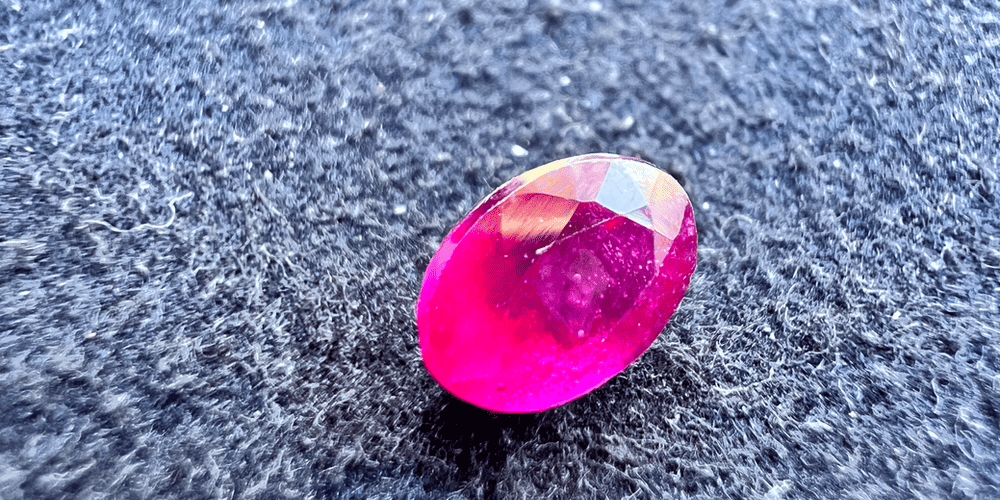
Corundum: Table of contents
- Geological Formation of Corundum
- Rough Corundum – Raw Beauty Revealed
- Sources – The Global Scope of Corundum
- Historical Significance of Corundum – Through the Ages
- Metaphysical Properties of Corundum – Illuminating energies
- Varieties of Corundum
- Corundum colors
- Optical Effects of Corundum
- Durability and Wearability of Corundum
- Corundum Enhancements – Preserving Natural Beauty
- Synthetic Corundum – Nature in the Laboratory
- Imitations of Corundum – Discerning the Genuine
- Corundum Care – Preserving natural beauty
Geological Formation of Corundum
Corundum, composed of aluminium oxide, forms under high-pressure conditions in metamorphic rocks and igneous environments. It is often found in placer deposits.
The creation of this gem involves the crystallisation and interaction of minerals under intense heat and pressure, giving rise to the radiant brilliance of corundum.
Rough Corundum – Raw Beauty Revealed
Frequently found in different forms, crystals of this mineral generally display a common barrel shape or a prismatic structure with flat terminations.
Sometimes, they can have a bipyramidal configuration.
The mineral can also be found in the form of massive and granular formations, as well as in the form of rolled pebbles.
Sources – The Global Scope of Corundum
Corundum is found in various parts of the world, with major deposits in Sri Lanka, Myanmar, Thailand, Madagascar and Australia, among others.
Each source contributes to unique variations in color and quality, making corundum a widely sought-after gemstone in jewellery and beyond.
Historical Significance of Corundum – Through the Ages
The historical significance of corundum, including its most prized varieties, ruby and sapphire, is closely linked to human civilisation and culture. Throughout the ages, these precious stones have captivated people’s hearts and minds, becoming symbols of power, love and spiritual significance.
- Ruby – The Stone of Kings and Emperors :
Ruby, the red variety of corundum, has a long and illustrious history.
Ancient times: In ancient times, rubies were associated with vitality, passion and courage. Their deep red color, similar to that of the sun, was said to contain a mystical fire capable of protecting and invigorating the wearer.
In many cultures, rubies were considered the ‘king of gems’ and held an important place in the hearts of sovereigns and emperors.
Ancient India: In ancient India, rubies were considered precious offerings to the gods, symbolising devotion and prosperity.
China: In China, rubies were associated with imperial power and were often worn by high-ranking officials and emperors.
Medieval Europe: In medieval Europe, rubies were considered a symbol of love and devotion and were sought after for engagement rings and royal jewellery.
Birthstone: Today, the ruby is recognised as the birthstone of July.
- Sapphire – The Stone of Wisdom and Divine Protection :
The sapphire has a history as rich and deep as the ruby.
Ancient civilisations: Ancient civilisations believed that sapphires were linked to divinities and conferred wisdom and protection on the wearer.
In various cultures, sapphires were associated with the heavens, symbolising truth, loyalty and spiritual insight.
Ancient Greece and Rome: In ancient Greece and Rome, sapphires were linked to the god Apollo and were thought to bring wisdom and enlightenment.
Medieval Europe: In medieval Europe, members of the clergy often wore sapphire rings to symbolise their link with the heavens and divine protection. Sapphires were also believed to protect against dangers and negative energies.
Throughout history: Throughout history, rubies and sapphires have adorned the regalia and jewellery of royalty and nobility. They were present in crowns, sceptres and other ceremonial regalia, representing power, divine favour and legitimacy.
The appeal of these precious stones lay not only in their captivating beauty, but also in the mystical qualities attributed to them.
Birthstone: Today, sapphire is recognised as the birthstone of September.
Metaphysical Properties of Corundum – Illuminating energies
Beyond their royal associations, rubies and sapphires are linked to healing and spiritual properties.
In ancient times, they were believed to have medicinal properties and were used to treat a variety of ailments. In spiritual practices, these precious stones were believed to enhance meditation, promote inner peace and bring clarity to the mind.
Ruby:
Ruby is thought to improve energy levels and revitalise the body, promoting a sense of vitality and vigour.
Ruby is also associated with emotional healing and balance. It is thought to help release negative emotions, such as anger and frustration, and promote a feeling of positivity.
Above all, the ruby is known as a stone of passion and love, believed to strengthen relationships.
Sapphire is associated with wisdom and spiritual enlightenment. It is thought to promote a sense of calm and mental clarity, as well as a divine connection.
It is also thought to promote a sense of calm and tranquillity, reducing stress and anxiety and promoting mental clarity.
Above all, sapphire is associated with a connection with the divine and the higher self, offering spiritual enlightenment and a deeper understanding of life’s purpose.
Varieties of Corundum
Corundum, a family of precious stones in a variety of colors, comes in a breathtaking range of varieties. Among the most famous are :
Ruby :
The ruby, with its flamboyant red hues, is considered the ‘king of gems’, exuding passion and love. Revered for its vibrant color, the ruby has been cherished throughout history as a symbol of power and vitality.
Sapphire :
Sapphires are often associated with the color blue, but this perception is not accurate.
In fact, sapphires come in a wide range of colors, each with its own unique charm and appeal. From the classic serene blue sapphire to the enchanting pink of padparadscha sapphire and the vibrant yellow of yellow sapphire, the sapphire family dazzles with its kaleidoscope of hues.
Corundum colors
Corundum’s captivating kaleidoscope of colors offers a gemstone for every preference and occasion. From the red intensity of rubies to the blue serenity of sapphires and the delicate hues of other varieties, corundum’s range of colors celebrates nature’s artistic brilliance.
Ruby:
Rubies, a variety of corundum, come in a wide range of red colors, each with its own unique characteristics and appeal. The intensity of red in rubies is influenced by the presence of trace elements, particularly chromium, in their crystalline structure. The color spectrum of rubies varies from light to deep red, with different levels of saturation and hue. At the peak of ruby color, the most sought-after shade is known as “pigeon’s blood red”. This exceptional shade is an intense, vivid red with a hint of blue undertone.
Secondary Shades and Color Zones :
In addition to their main red hue, some rubies can have secondary hues and zones of color, adding to their complexity and appeal. Common secondary shades include violet, pink and orange.
The color zone refers to the uneven distribution of color within the gem, resulting in patches or bands of different shades. These unique characteristics can enhance the individuality of each ruby, making it a one-of-a-kind gemstone.
Sapphire:
When you think of sapphires, many people immediately think of the classic blue variety. However, sapphires are not limited to a single color; they come in a bewitching kaleidoscope of hues that have captivated the world for centuries.
As a variety of corundum, sapphires come in an astonishing range of colors, each with its own unique charm and appeal.
- Blue Sapphires :
The most iconic and widely recognised sapphire color is the serene, captivating blue. Ranging from pale, delicate sky blue to deep, rich royal blue, blue sapphires symbolise tranquillity, loyalty and wisdom. These gems have adorned the crowns and jewels of royalty throughout history, making them a symbol of prestige and elegance.
- Fancy sapphires :
This group includes a fascinating variety of sapphire colors, each with its own distinctive beauty and symbolism. These varied colors include yellow sapphires, orange sapphires, green sapphires, pink sapphires, violet sapphires and many more. Sapphires can also show color changes.
- Padparadscha Sapphire :
Padparadscha sapphires are the rarest and most sought-after variety, offering a delicate and enchanting blend of pink and orange hues. The name “padparadscha” comes from the Sinhalese word for lotus flower, as these gems recall the delicate, harmonious colors of the flower. Padparadscha sapphires are highly prized for their exquisite, unique appearance.
Optical Effects of Corundum
Star Sapphires and Rubies :
Star sapphires and rubies are a fascinating variety that exhibit a sparkling, star-shaped effect on the gem’s surface due to asterism. When viewed under a direct light source, a captivating star pattern appears on the stone, reminiscent of a twinkling star in the night sky.
This mesmerizing optical phenomenon enhances the appeal of star sapphires, making them highly sought-after by gem enthusiasts.
This effect is also available in Cat’s Eye rubies and sapphires.
The red fluorescence of rubies:
Depending on their origin, rubies will fluoresce when exposed to UV light. This phenomenon is quite impressive in Myanmar rubies, which fluoresce even in sunlight, giving the impression that the stone is illuminated from within.
Durability and Wearability of Corundum
Corundum’s exceptional hardness, rated 9 on the Mohs scale, makes it a durable gemstone ideal for everyday use. Its enduring beauty stands the test of time, retaining its radiance and appeal for generations.
Corundum Enhancements – Preserving Natural Beauty
As a valuable and rare gemstone, corundum undergoes numerous treatments to improve its appearance and therefore its value.
Heat treatment: Corundum is commonly heat treated to improve its clarity and colour. Although this enhancement is widely accepted and does not diminish the value of the gemstone, it is essential to disclose any treatment when describing a gem or piece of jewellery.
Diffusion: This treatment involves adding chemical elements to the gem’s surface, then heating it. It creates a coloured layer on the outer surface, giving the appearance of a more precious, intensely colored gemstone. This treatment is stable, but only treats a very thin portion of the stone’s surface. Repolishing a diffused stone may result in staining or loss of color, as the colored surface is removed.
Fracture filling: Corundum with visible fractures or cavities can be filled with a substance, such as glass or resin, to improve clarity and durability. This treatment can make the gemstone more visually appealing, but it can affect its overall value.
Beryllium treatment: A process that introduces beryllium into corundum to improve or modify its color. This can create intense, vivid colors, but transparency and disclosure are essential as they can significantly affect the gem’s value. This treatment is stable.
Irradiation: This involves exposing the gem to radiation to modify its color. Irradiation can create attractive hues, but it must be disclosed as it can affect the gem’s stability and long-term appearance.
Surface coating: A thin layer of color- or brilliance-enhancing substance is applied to the gem’s surface to temporarily improve its appearance. This treatment is generally not permanent and may fade over time.
Laser drilling: Used to improve the clarity of corundum by creating tiny channels to remove inclusions. Laser drilling is often followed by fracture filling to make the inclusions less visible.
Gemstone sellers must disclose any treatment carried out on corundum to ensure transparency and help buyers make informed decisions.
Synthetic Corundum – Nature in the Laboratory
Synthetic corundum, also known as laboratory-grown or created corundum, is widely available on the market.
Synthetic rubies and sapphires have the same physical and optical properties as their natural counterparts.
Although synthetic corundum offers a more affordable option, it is essential to disclose its synthetic nature when describing a gem or piece of jewelry.
Synthetic corundum, as well as non-gem-grade corundum, is also widely used in industry for its properties.
Imitations of Corundum – Discerning the Genuine
Corundum, with its remarkable beauty and value, is often subject to imitation. Buyers should be careful with imitations.
Ruby: Red Glass, Pyrope-Almandine Garnet, Corundum Doublet, Red Tourmaline, Red Spinel and Garnet-Glass Doublet.
Blue sapphires: Iolite, Cyanite, Blue Spinel, Blue Glass, Tanzanite, Corundum Doublet, Blue Tourmaline.
Fancy sapphires: Unfortunately, all gemstones and colored materials, such as Tourmaline, Spinel, Garnets, and Glass, can be used as imitations, in addition to Corundum Doublets and Garnet-Glass Doublets.
As a member of the very select “gemstone” appellation, consisting of Ruby, Sapphire, Emerald and Diamond, it is absolutely essential for potential buyers of Rubies and Sapphires to go through reputable sellers and jewelers, as MANY stones on the market today are not what they claim to be.
Corundum Care – Preserving natural beauty
Taking care of corundum jewellery ensures that its timeless beauty endures. To preserve their lustre, avoid exposing corundum to aggressive chemicals or sudden changes in temperature.
Clean the gem gently with mild soapy water and a soft brush. Store corundum jewellery separately from other precious stones to avoid scratches and damage.
All corundum can be cleaned using mechanical cleaners, unless it has been glass-filled or surface-coated.
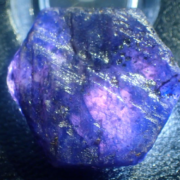
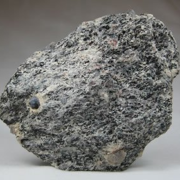
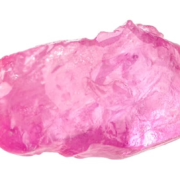
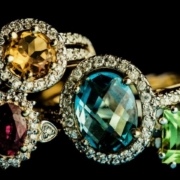
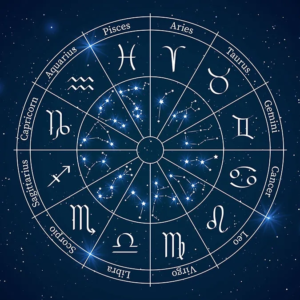
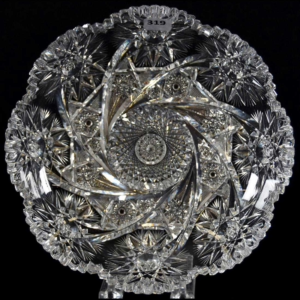
Leave a Reply
Want to join the discussion?Feel free to contribute!